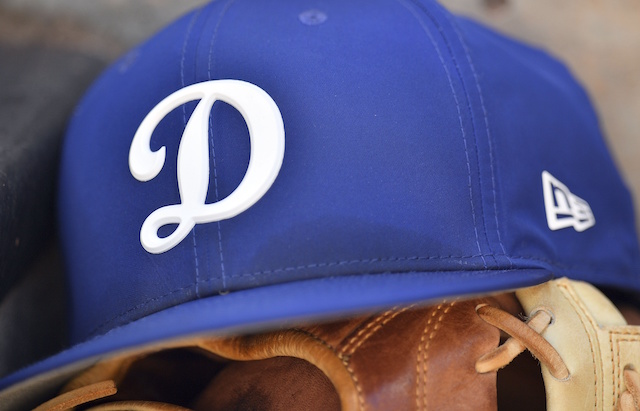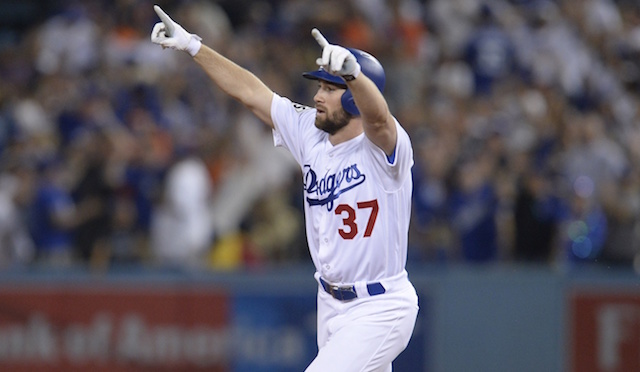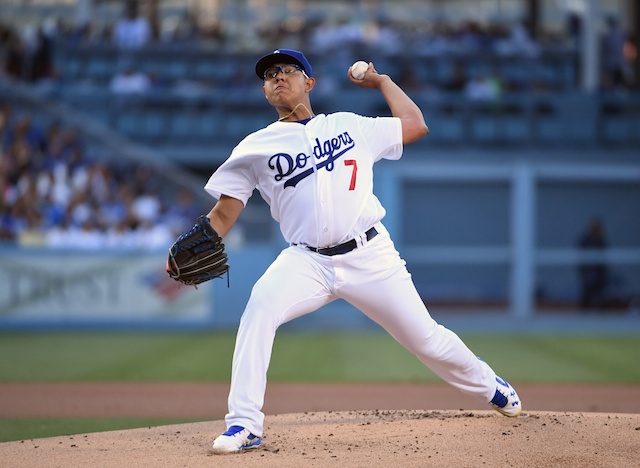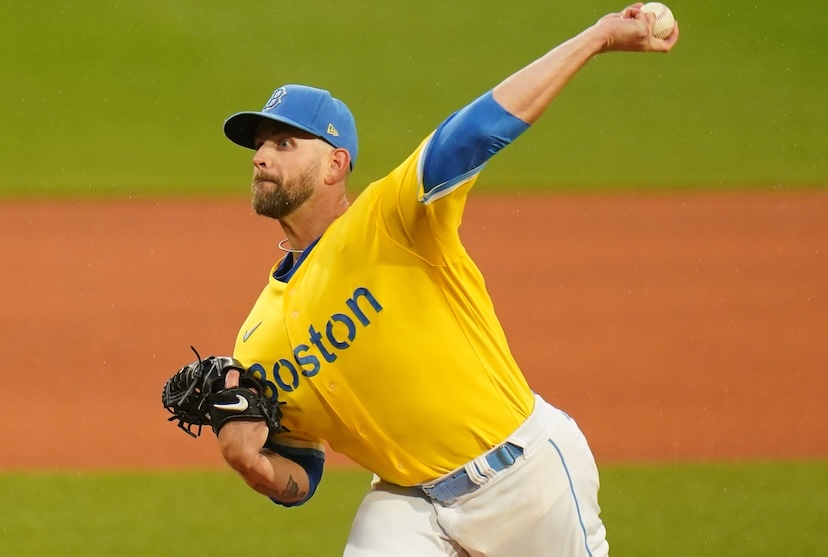As the July 31 non-waiver trade deadline inches closer, the Los Angeles Dodgers continue to evaluate possible deals to upgrade what’s been baseball’s best roster through roughly two-thirds of the 2017 season.
While the club is in the market for a left-handed reliever, it wouldn’t be a surprise to see the Dodgers acquire a starting pitcher as well, given the unfortunate circumstances that took a toll on the staff this past week.
Both Clayton Kershaw and Brandon McCarthy were placed on the 10-day disabled list on Monday with respective back and blister issues — the former expected to be sidelined for at least the next four weeks.
Despite the injuries, the Dodgers were likely seeking rotation upgrades even prior to the tough news. Specifically a right-hander with higher upside than current options on the roster to complement lefties Kershaw, Alex Wood and Rich Hill in the postseason.
The New York Yankees and Atlanta Braves are amongst the most serious suitors for the Oakland Athletics’ Sonny Gray, while it’s anyone’s guess if the Texas Rangers will actually entertain trade offers for Yu Darvish.
That being said, another high-profile right-handed starting pitcher the Dodgers could have turned their attention to is Detroit Tigers ace Justin Verlander, who’s reportedly being aggressively shopped by his longtime team.
Although there were reports of the Dodgers having some level of interest, that no longer appears to be the case.
Verlander, 34, is in his 13th big league season and is still considered to be one of the more durable arms in the league.
The 2011 American League Cy Young Award winner has already logged 124 innings this year (19th most in the Majors) and is on pace to exceed 200 frames for the 10th time in the last 11 seasons.
Adding stability to the rotation, especially with an impressive track record such as Verlander, would go a long way for the Dodgers as they seek their first World Series appearance in 29 years.
Despite the wear and tear, Verlander still boasts one of the best fastballs in the game, with his heater averaging 95.6 mph. That’s his best mark since the 2011 campaign.
Though Verlander’s numbers aren’t as eye-catching as they were last year when he was the runner-up for the AL Cy Young Award, his 2017 season is trending in the right direction.
After posting a 4.73 ERA and 4.28 FIP with 8.4 strikeouts and 4.4 walks per nine in 104.2 innings prior to the All-Star Break, Verlander has pitched to a 3.26 ERA and 3.82 FIP with 10.2 strikeouts and 2.8 walks per nine in 19.1 innings thus far in the second half.
That isn’t a coincidence, either. Verlander has historically pitched better in the second half during his career, as evidenced by a 3.43 ERA, 3.34 FIP, 23.7 strikeout and 6.8 walk percentage compared to a 3.60 ERA, 3.59 FIP, 21.9 strikeout rate and 7.9 walk rate during the first half.
Looking at his splits in Interleague play, Verlander owns a solid 3.03 ERA and 1.15 WHIP in 261.2 innings against National League teams. And while he’s never pitched at Dodger Stadium, one would assume his numbers will naturally improve moving to a more pitcher-friendly ballpark with better defense behind him.
In the postseason, Verlander owns a 3.39 ERA and 1.09 WHIP in 98.1 innings, seeing his most recent action during the 2014 AL Division Series where he allowed three earned runs in five innings.
The problem with acquiring Verlander isn’t because the Tigers are reluctant to trading him. It’s due to the fact that he’s owed a whopping $56 million over the next two seasons combined, along with a vesting option in 2020 that will trigger if he finishes in the top-five for Cy Young voting in 2019.
While the Dodgers have trimmed significant payroll obligations in recent years, the club is trying to get below the luxury tax line, and adding another hefty contract in Verlander could complicate matters.
If the Tigers were willing to cover some of that salary, along with potentially taking on another bad contract such as Scott Kazmir, then a trade with the Dodgers becomes more conceivable.
Something to keep in mind that might work in the Dodgers’ favor is that Verlander owns 10-and-5 rights, meaning he has full authority to approve or reject any trade that the Tigers present to him.
Given that he already owns a house in Los Angeles, it’s hard to imagine Verlander declining the opportunity to join the Dodgers. What’s not known, however, is if he’d approve a trade to, say, the Chicago Cubs — another team that’s been linked to him.
If Verlander informs the Tigers he’s only willing to approve a trade to Los Angeles, then that would significantly lower the return going back to Detroit in terms of prospects — especially if the Dodgers take on the majority of his salary.
Even if the non-waiver trade deadline passes and Verlander remains in Detroit, he’ll still be a candidate to move in August.
Once he inevitably passes through waivers, the Tigers can continue working on trades with teams that can realistically afford the gist of Verlander’s contract. There aren’t many that likely can, which, again, benefits the Dodgers if there’s still a need.
A trade for Verlander remains a long shot either way, but it’s worth exploring at the very least in what’s a relatively weak trade market for starting pitchers.








